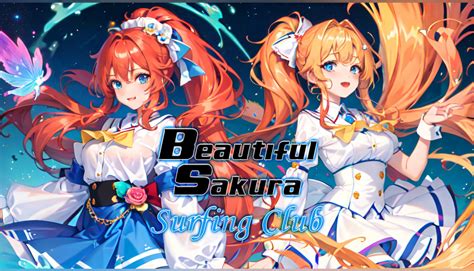Japanese Nurse Costume: A Cultural Fashion Trend Explained
In recent years, the Japanese nurse costume has transcended its original context, becoming a global fashion and cultural phenomenon. This trend, often seen in cosplay, pop culture, and even mainstream fashion, blends traditional Japanese aesthetics with the universally recognized symbol of nursing. But what lies beneath this fascination? This article delves into the historical, cultural, and social dimensions of the Japanese nurse costume, exploring its evolution, significance, and controversies.
Historical Roots: Nursing in Japan
Nursing in Japan has a rich history, dating back to the Meiji era (1868–1912), when Western medical practices were introduced. During this period, Japanese nurses adopted Western-style uniforms, which typically included a white dress, apron, and cap. Over time, these uniforms evolved to reflect both functionality and cultural identity. The traditional Japanese nurse’s uniform, with its crisp lines and modest design, became a symbol of professionalism and care.
The Meiji era marked a turning point in Japanese healthcare, as the country sought to modernize its medical system. Nursing uniforms were not just practical but also served as a visual representation of Japan’s embrace of Western science and technology.
The Cultural Fusion: Nurse Costumes in Pop Culture
The Japanese nurse costume began its journey into pop culture through manga, anime, and video games. Characters like Nurse Joy from Pokémon and Sakura Haruno from Naruto popularized the image of the nurse as a caring yet strong figure. These depictions often incorporated elements of Japanese fashion, such as shorter skirts, knee-high socks, and oversized bows, creating a distinct aesthetic that resonated with audiences worldwide.
"The nurse costume in Japanese media is more than just a uniform; it’s a canvas for storytelling, blending innocence, strength, and cultural identity."
Cosplay and Fashion: A Global Trend
Cosplay, the practice of dressing up as characters from fiction, has played a significant role in the global popularity of the Japanese nurse costume. Events like Comic Market (Comiket) in Tokyo showcase elaborate interpretations of nurse outfits, often blending traditional and modern elements. This trend has spilled over into mainstream fashion, with designers incorporating nurse-inspired elements into their collections. Brands like Comme des Garçons and Yohji Yamamoto have explored themes of uniformity and care in their designs, reflecting the costume’s cultural impact.
The Japanese nurse costume has become a versatile symbol, adaptable to various contexts, from cosplay to high fashion, demonstrating its enduring appeal.
Controversies and Criticisms
Despite its popularity, the Japanese nurse costume has faced criticism for its portrayal in media and fashion. Some argue that it perpetuates stereotypes of nurses as passive or overly sexualized figures, detracting from the profession’s dignity. In 2020, the Japanese Nursing Association expressed concern over the costume’s misuse, emphasizing the need to respect the profession’s integrity.
Pros
- Celebrates Japanese cultural aesthetics
- Provides a platform for creative expression in cosplay
- Highlights the historical evolution of nursing uniforms
Cons
- Risks perpetuating stereotypes of nurses
- Can be seen as appropriating a professional uniform
- May overshadow the realities of nursing as a profession
The Future of the Trend
As the Japanese nurse costume continues to evolve, its future will likely be shaped by ongoing cultural dialogues. Designers and creators are increasingly mindful of the need to balance artistic expression with respect for the nursing profession. Collaborations between fashion brands and healthcare organizations could pave the way for more thoughtful interpretations of the costume.
The trend’s longevity will depend on its ability to adapt to changing societal norms and sensitivities, ensuring it remains a celebration of culture rather than a source of controversy.
Practical Guide: Wearing the Japanese Nurse Costume Responsibly
For those interested in incorporating the Japanese nurse costume into cosplay or fashion, here are some guidelines:
- Research and Respect: Understand the historical and cultural significance of the nurse uniform.
- Avoid Stereotypes: Steer clear of overly sexualized or demeaning portrayals.
- Context Matters: Ensure the costume is appropriate for the event or setting.
- Support the Profession: Consider donating to nursing organizations or charities when using the costume for public events.
FAQs
What is the origin of the Japanese nurse costume?
+The Japanese nurse costume originated from Western-style nursing uniforms introduced during the Meiji era, later evolving to incorporate Japanese aesthetic elements.
Why is the Japanese nurse costume popular in cosplay?
+Its popularity stems from its frequent portrayal in anime, manga, and video games, as well as its versatility and cultural significance.
Is the Japanese nurse costume considered cultural appropriation?
+While not inherently appropriative, its use can become problematic if it disrespects the nursing profession or perpetuates stereotypes.
How can I wear the Japanese nurse costume responsibly?
+Research its cultural significance, avoid stereotypes, and ensure the context is appropriate. Consider supporting nursing organizations as well.
What is the future of the Japanese nurse costume trend?
+Its future depends on balancing creative expression with respect for the nursing profession and cultural sensitivity.
The Japanese nurse costume is more than just a fashion trend; it’s a cultural artifact that reflects Japan’s history, creativity, and global influence. By understanding its origins and implications, we can appreciate its beauty while respecting its significance. Whether in cosplay, fashion, or media, this costume continues to evolve, bridging the gap between tradition and modernity.


